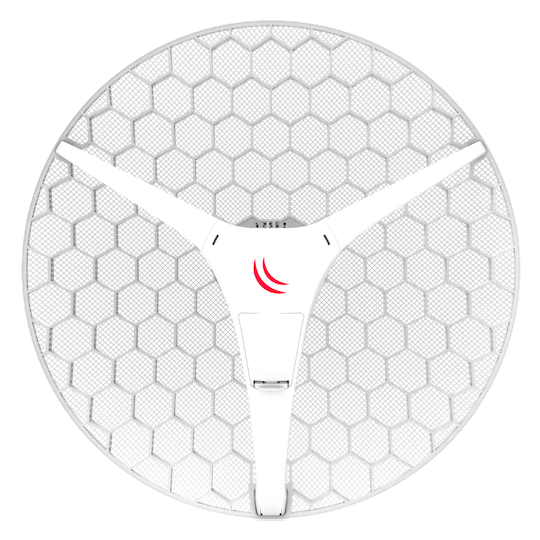
MikroTik: MikroTik Internetworking Engineer with LABS
***This course is not officially sponsored by MikroTik and not an authorized course by MikroTik. We respect the Trademarks of the mentioned company and institution.***
Description
MikroTik Certified Internetworking Engineer Training stands out as the most challenging and complex course track within MikroTik. It's the sole advanced course among all MikroTik offerings, and it requires prior completion of both the MikroTik Certified Network Associate and MikroTik Certified Routing Engineer courses.
Given its complexity, I've designed this course to comprehensively cover all topics within the MikroTik Certified Internetworking Engineer Training track. Throughout the course, we'll provide explanations and conduct hands-on LABS specifically focusing on advanced subjects such as Border Gateway Protocol (BGP) and Multiple Protocol Label Switching (MPLS). These topics are critical components implemented within the networks of Internet Service Providers (ISPs).
Here's an overview of the topics covered in this course:
- What is Autonomous System (AS)
- What is Border Gateway Protocol (BGP)?
- Path Vector algorithm
- BGP Transport and packet types
- iBGP and eBGP
- Stub network scenarios and private AS removal
- Non-stub scenarios
- iBGP and eBGP multi-hop and loopback usage
- Route distribution and routing filters
- BGP best path selection algorithm
- BGP prefix attributes and their usage
- BGP route reflectors and confederations
- MPLS basics
- Static label mapping
- Label Distribution Protocol (LDP)
- Penultimate-hop-popping
- MPLS traceroute differences
- LDP based VPLS tunnels
- Bridge split horizon
- BGP based VPLS
- BGP based layer3 tunnels (L3VPN)
- What is traffic engineering and how it works
- RSVP, static path, dynamic path (CSPF)
- Bandwidth allocation and bandwidth limitation differences and settings
This course is heavily lab-based, so we recommend using GNS3 with the MikroTik CHR image to effectively follow along. This is particularly important as some LABS require operating up to seven MikroTik Routers simultaneously.
Who this course is for
- Engineers and students who wants to learn how to configure BGP routing protocol on MikroTik routers
- Engineers who work in Internet Service Provider using MikroTik Routers and want to deploy MPLS
What you'll learn
- Understand what is BGP routing protocol and where it is used
- Understand what is the function on the Autonomous system
- Understand how prefixes are being advertised in the internet
- Understand how to configure eBGP neighboship
- Understand how to configure eBGP Authentication using TCP MD5 Key
- Understand where eBGP multihop should be used
- Understand why iBGP should be configured on routers within the same AS
- Understand what is the function of split horizon in iBGP
- Understand what are the 4 BGP messages and the function of each of them
- Understand what are the BGP states
- Understand what is the BGP Route Path Selection
- Understand what are the Attributes that are used in MikroTik for BGP
- Understand how to configure BGP Weight Attribute on MikroTik
- Understand how to configure BGP Local Preferece Attribute on MikroTik
- Understand how to configure BGP AS Path Preprending Attribute on MikroTik
- Understand how BGP Origin code Attribute works on MikroTik
- Understand how to configure MED Attribute on MikroTik
- Understand how to remove Private AS
- Understand how to configure BGP in a single homed stub network
- Configuring BGP Mutihomed stub network for ISP's failover
- Configuring BGP Mutihomed non-stub network
- Configuring Failover and Load-Balancing on BGP Mutihomed non-stub network
- Usage of Route Filter to accept and discard advertised prefixes the way in and out
- Understand what BGP Community is
- Configure BGP community with AS Prepend Path
- Understand the well-known BGP communities and difference between no export and no advertise
- Configure no export BGP Community
- Configure no advertise BGP Community
- Understand what BGP aggregate can do
- Configure BGP aggregate w/o Inherit Attributes
- Understand what is BGP Route Reflector
- Configure BGP Route Reflector inside an AS to reduce number of iBGP peers
- Understand what is BGP Confederation
- Configure BGP Route Confederation inside an AS to reduce number of iBGP peers
- Understand what is MPLS and where to use it
- Understand how to have a BGP free core in your ISP using MPLS
- Understand the MPLS acronyms ((CE, PE, P, Label Push, Label Swap, Label Pop)
- Configure MPLS using the static labeling
- Configure MPLS using the dynamic labeling
- Filter MPLS using Accept and Advertise Filter
- Understand and configure VRF lite on MikroTik
- Understand MPLS layer 3 VPN using VRF
- Configure MPLS layer 3 VPN using VRF
- Understand and configure MPLS layer 2 VPN using VPLS
- Understand what is MPLS Traffic Engineering
- Configure MPLS Traffic Engineering
- Run VPLS over TE Tunnels
Requirements
- Basic networking knowledge
- Basic TCP/IP protocol knowledge
- Knowledge about Interior routing protocol such as RIP and OSPF












